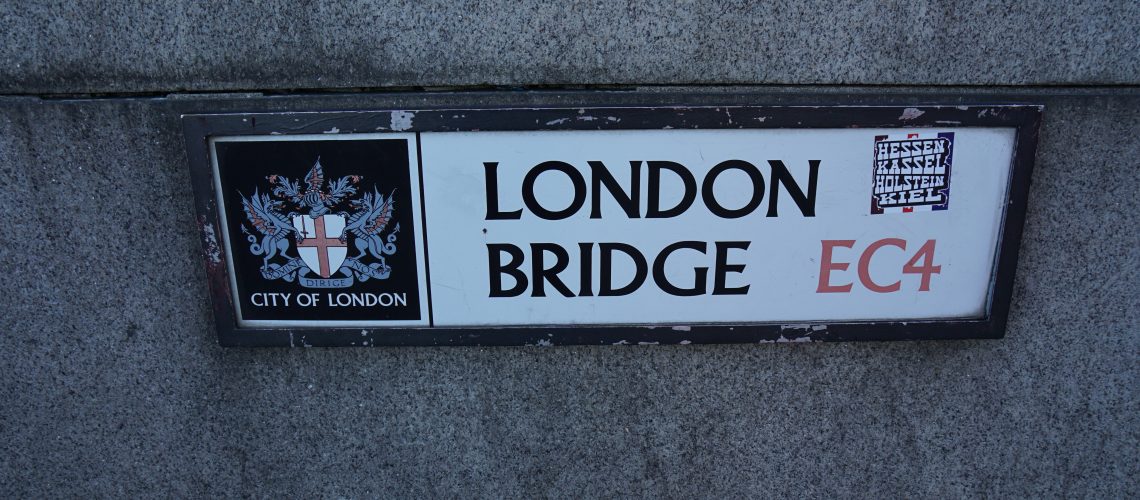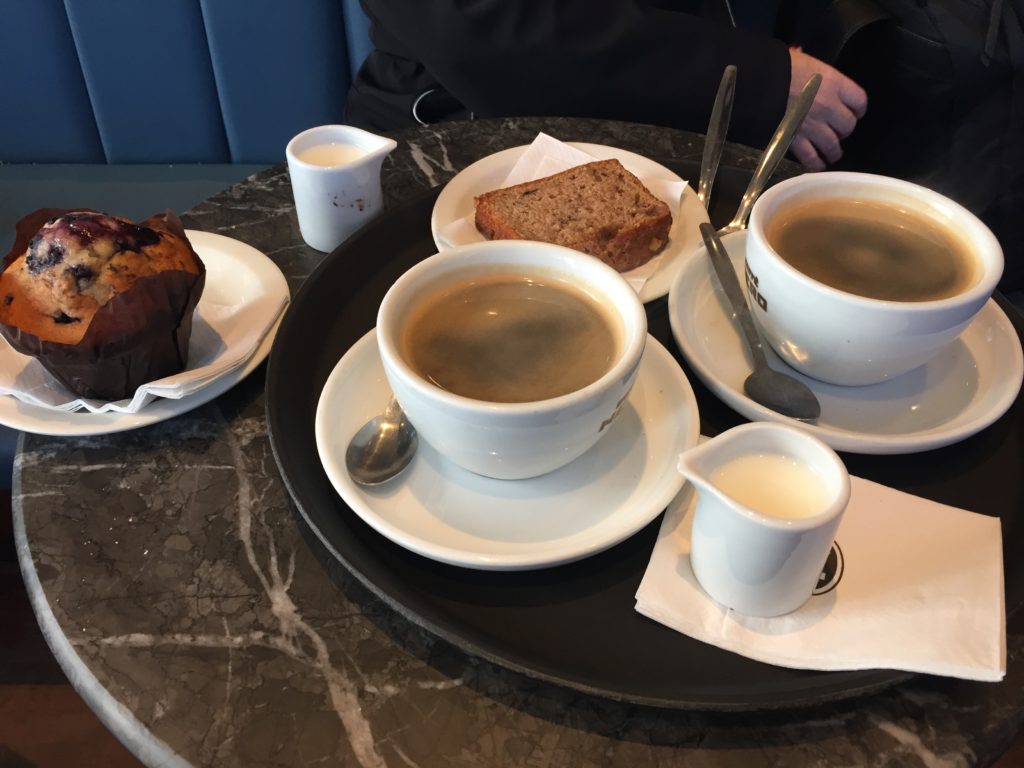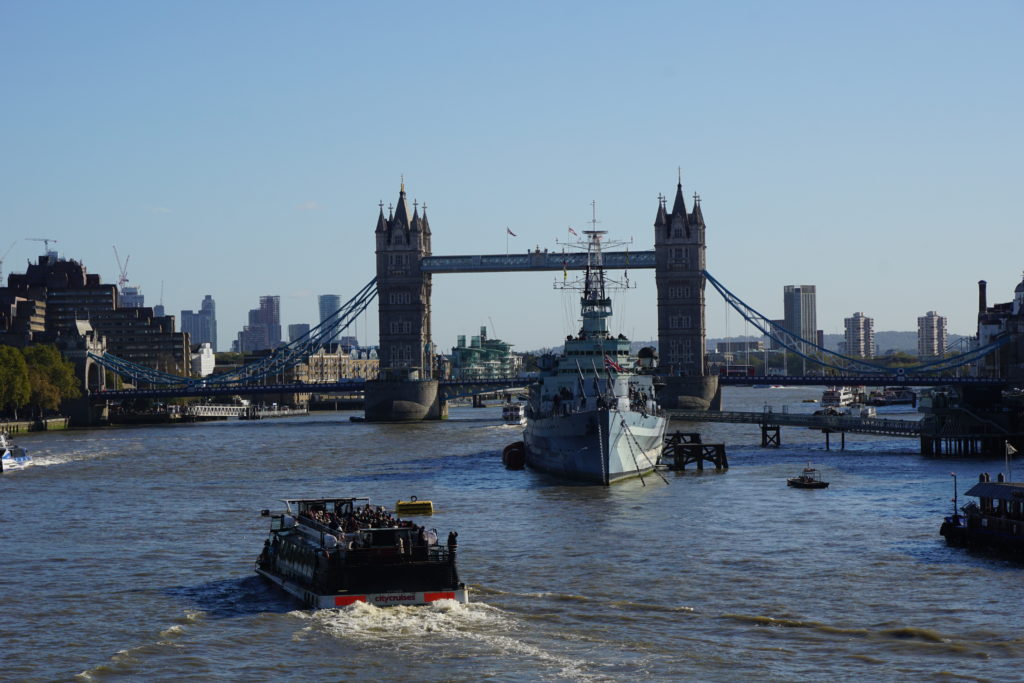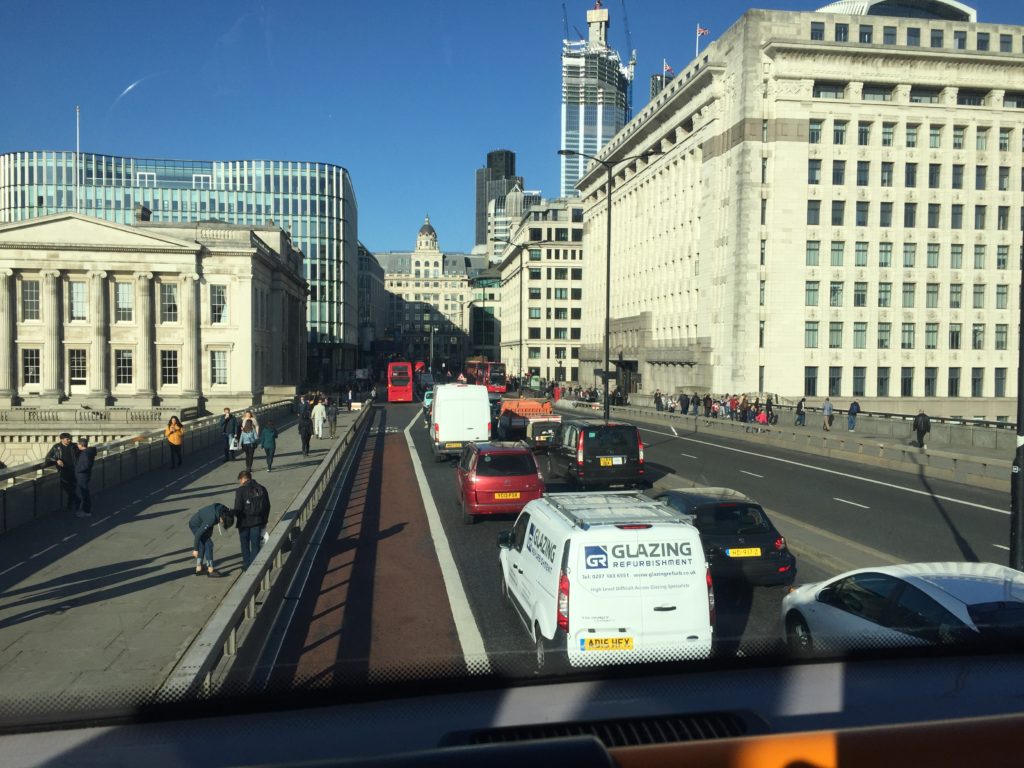Despite the fact that my girlfriend left me within an hour of landing (click here to read how that happened—it’s worth the read), our first day in London was pretty amazing! As fate would have it, she returned and we had—as the British would say—a lovely evening. We obviously made the best of our time in London, gathering at a Philly dive bar to watch the Eagles game with a crowd full of Eagles fans. Yes—we travelled 3,500 miles away from Philly to have that experience. Sounds reasonable, right? We thought so. If you missed that post, click here to read about Passyunk Avenue, a Philly dive bar in London.
You’re probably wondering why we travelled such a distance only to spend our time duplicating an experience we could have easily had at home. London has so much to offer! There are several attractions in London, many of which have been in existence longer than the United States itself. I’m fairly confident that nothing over there is going away before I do. If I missed something, I’ll go back and see it. The experience I had at Passyunk Avenue, however, could never be duplicated. I had been in Los Angeles the previous year for the Eagles/Rams game and was amazed at the number of fans that made the journey. It was astonishing to be so far from home, surrounded by people from … well, back home. We were living that experience again, except this time it was in a different country. It was surreal. I can always go back and London again and see the things I missed, but I could never duplicate our experience at Passyunk Avenue. You only get to experience that if you’re lucky enough to be a part of it when it happens.
That being said, we would be in London all week and had every intention on seeing everything we could. Today would be the first day we set out to explore London. I had several attractions pinned on the map as places to see. My game plan was to hit the places furthest from our hotel and work our way inward. Looking at the map, today we would be going to the Tower of London/Tower Bridge area.
Breakfast
My first mission of the day was to get some cash. We had managed to get through the previous day on credit cards—but I have to say, it’s a very helpless feeling having no cash on you. I headed out to find a MAC machine (ATM) while Kathie got ready. I knew we would miss breakfast at the hotel but I was ok with that. I’m big on going out to breakfast. When I travel I usually try to find cool breakfast spots as opposed to the hotel. So I’d go get some cash and we’d go find somewhere to have breakfast.
I generally do well with planning but I got the whole breakfast situation wrong. Upon check-in at the hotel they told us breakfast was included. I wasn’t really sure what that meant. I assumed it meant we could have toast, coffee, and one-inch muffins that weren’t any good. I was completely wrong. The following day I discovered that we were entitled to anything on the breakfast menu, including the buffet! Today we ended up at a place called Caffè Nero. At first, Caffè Nero looked like a cool neighborhood cafe. Within a few days I would see several thousand more of these places throughout the city. I saw more Caffè Nero’s than Starbucks: Not quite the unique breakfast experience I sought. Caffè Nero was quite good, but we were looking for a full blown breakfast, like eggs Benedict—yum! I ended up with a muffin. Like I said, I got breakfast wrong that day.
London Bridge
We took the tube to London Bridge Station, which dropped us off at—you guessed it, London Bridge. This is NOT Tower Bridge! Tower Bridge is the pretty one that is showcased in travel brochures. London Bridge is … well, blah. Just a basic concrete bridge. The history, however, is quite fascinating. “London Bridge” refers to several bridges that have spanned the River Thames between Southwark and the City of London. The current London Bridge as we know it today opened in 1973. There has been a bridge at this location for nearly two thousand years; it is just one of several at this location to be called London Bridge.
As I walked across the bridge, I admit I knew very little about it’s history. I knew there was a song, and my fair lady and I hoped this one wouldn’t fall down. Subsequently, I dug into it’s history, believing the fame of this ordinary bridge derived from something other than a song. Here are a few facts about the bridge that will certainly provide a greater appreciation of this span across the River Thames.
Roman Bridges
The first London Bridge was built by the Romans sometime around 50AD. Prior to their arrival, there had been no permanent settlement in the area today known as London. In effect, London begins with the invasion of the Romans and London Bridge
- The Romans Invade Britain in 43AD.
- The largest city in Britain at this time is Camulodunum (present day Colchester). The advancing armies, making their way to Camulodunum, are halted by the River Thames. As a result they are forced to build a bridge to get their men across. Chosen for it’s narrow crossing, they build a bridge near the current location of present day London Bridge.
- The first Roman bridge was most likely a pontoon bridge. A more permanent timber bridge would be built sometime around 55AD.
- A shipping and trading settlement took root on the north end of the bridge and the town of Londinium (London) grew around it. A smaller settlement developed on the south end, now known as Southwark.
- Londinium quickly grew to be a major commercial center in Roman Britain, becoming the largest city in Great Britain.
- 410AD: Roman Britain have been facing repeated raids by the Picts (Scotland) and Saxons. Rome—under attack from several barbarian tribes—recalls all Roman soldiers stationed in Britain to Rome. The Roman Citizens of Britain appeal to the Emperor for help, but he is in no position to help them. Emperor Honorius tells the people of Britain they are to fend for themselves; that they must, “look to their own defenses.”
Saxon Period
Following the departure of the Romans, the Saxons allowed the bridge to fall into disrepair. During this time, the river formed a natural barrier between the hostile kingdoms of Mercia and Wessex. You will know Mercia as a place swallows randomly drop coconuts as they migrate from tropical climates—according to Monty Python. Anyway . . .
- It is believed to have been rebuilt under Saxon King Ethelred the Unready around 990 to allow troop movement against Danish forces.
- The bridge was destroyed in 1014 by Ethelred’s ally Olaf the Norwegian to divide the Danish forces that held both the city of London and Southwark.
- The bridge was rebuilt in 1066 by King William I following the Norman conquest. This was destroyed by the London Tornado of 1091.
- It was repaired/replaced by King William II but this was destroyed by a fire in 1136.
- Under King Henry II, the final timber bridge was built in 1163.
Old London Bridge
Following nearly a thousand years of timber bridges between the City of London and Southward, a new stone bridge would be commissioned by King Henry II—this one would stand for 600 years.
- Construction began in 1176 and would take 33 years to complete, finishing during the reign of of King John in 1209.
- The bridge was 26 feet wide (roadway was just 12 feet) and nearly 900 feet long. It was built over 20 arches: 19 stone and 1 wood center drawbridge.
- There were as many as 200 buildings on the bridge: houses and shops lined both sides, many arched across the road forming tunnels—some overhung the river. There was even a small chapel at it’s center.
- From 1305 to 1678 traitors’ heads were displayed on spikes over the souther gatehouse. The first head to be displayed is said to have been William Wallace. If you saw Braveheart you know who this is.
- Keep left! The bridge was notoriously congested and could take as long as an hour to cross. In fact, in 1722 it was so congested that the Mayor ordered that all traffic keep to the left to avoid chaos. Why left? The reason can be traced back to medieval times. Unknowing who you may encounter on your travels, one would pass oncoming riders on the left, keeping the stranger to your right (most people are right handed), allowing you to wield the sword if necessary. Not that common folks were riding around with swords in 1722, but the medieval custom of passing on the left is said to have influenced the decision to keep left. To this day, you drive on the left side of the road in Great Britain.
- From 1758 to 1762 all houses and shops on the bridge were demolished.
New London Bridge
Eventually, the six hundred year old medieval bridge became outdated—a new bridge was built about 100-feet upstream. The old bridge remained in use until the completion of the new one, and then it was demolished.
- Work began in 1824; the bridge opened in 1831. It measured 928 feet long and 49 feet wide.
- New approach roads were constructed, costing three times that of the bridge itself.
- Increases in traffic and weight caused the bridge to sink—about one inch every eight years. At some point, one side was 3-4 inches lower than the other. By the 1960’s the bridge was not capable of supporting the increases in load created by modern traffic.
- In 1967, the bridge was put up for sale. On April 18, 1968, the bridge was purchased by American Robert P. McCulloch of McCulloch Oil for $2,460,000. If is often suggested that McCulloch believed he was buying the more famous Tower Bridge, though this does not appear to be the case.
- It is in the Guinness Book of World Records as the largest antique ever sold
- As the bridge was dismantled, each individual stone was numbered so that it could be properly reassembled again. They were then shipped to America where it would be a tourist attraction for McCulloch’s real estate development.
- The bridge was fully reconstructed at Lake Havasu City in Arizona. Reconstruction of the bridge took three years and was completed in 1971. Today you can still drive or walk over the famous bridge that once crossed the River Thames for a century in a half.
Current London Bridge
The current London Bridge was opened on March 17, 1973. People celebrated everywhere! Well, it was St. Patrick’s Day. But did they celebrate the opening of the new bridge? I’m sure they did. Anyway, I found myself walking across London Bridge, unbeknownst to it’s fascinating history. I would later discover I was crossing the River Thames just as the Roman armies had nearly two thousand years earlier. Where was I going? Tower Bridge of course, like everyone else!
Click here to continue on to the Tower of London and Tower Bridge



